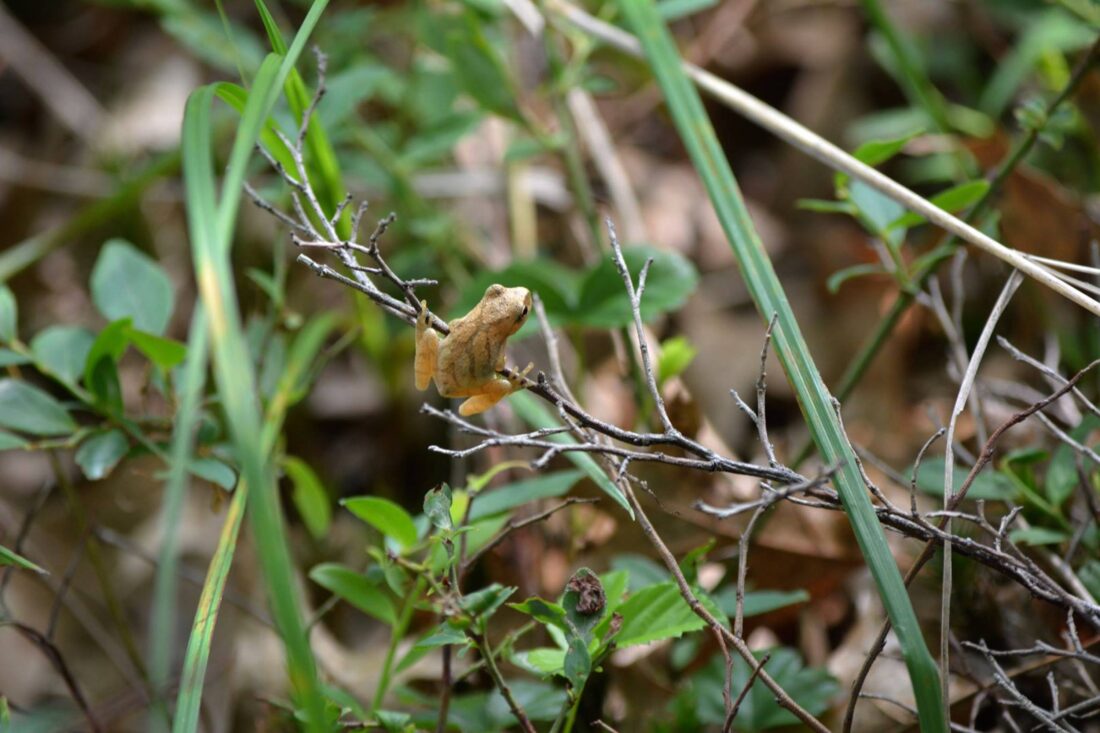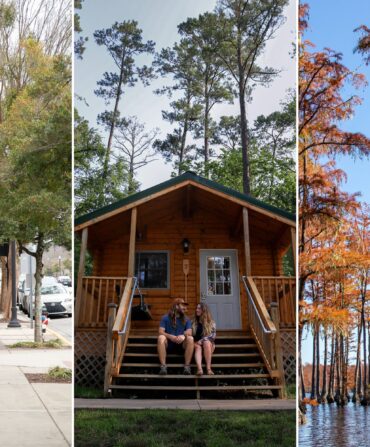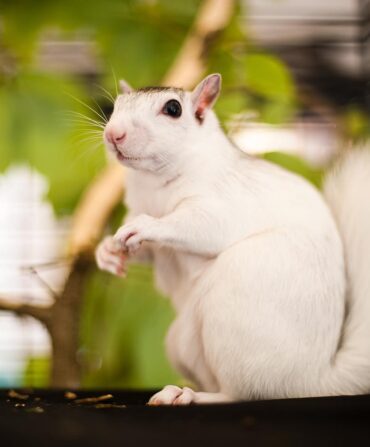Tiny frogs play a big part in Virginia’s maple syrup harvest. Spring peepers, or Pseudacris crucifer, are wee tree frogs that make a high pitched “peep-peep” sound in early spring. Considered some of the first animals to loudly welcome the season, they’re the reason maple syrup harvesters know it’s time to stop the sap production.

Maple syrup might be most strongly associated with Vermont, but a handful of other states produce the sweet stuff too. In a few pockets of Ashe County, North Carolina, on farms in West Virginia’s Appalachian Mountains, and throughout Highland County, in Virginia’s Allegheny Mountains, folks transform sugar-maple sap into amber syrup.
Maple syrup requires above-freezing temperatures during the day and below-freezing temperatures at night for the sap to run properly. Spring peepers go dormant in the winter and only emerge when everything has warmed up, meaning when they start making a racket, the clock’s up on sap too.
Valerie Lowry learned about this natural harbinger twenty years ago when she married Pat Lowry of Highland County, Virginia. Pat’s Scots-Irish family has been making maple syrup in the town of Monterey since before the Civil War. Their company, Back Creek Farms, stands beside the Upper Back Creek and is open for tours and tastings. “We have an English tin pan from Pat’s great grandmother Lizzy that we judge the age by, and that’s what we use to boil the majority of syrup in,” Valerie says.
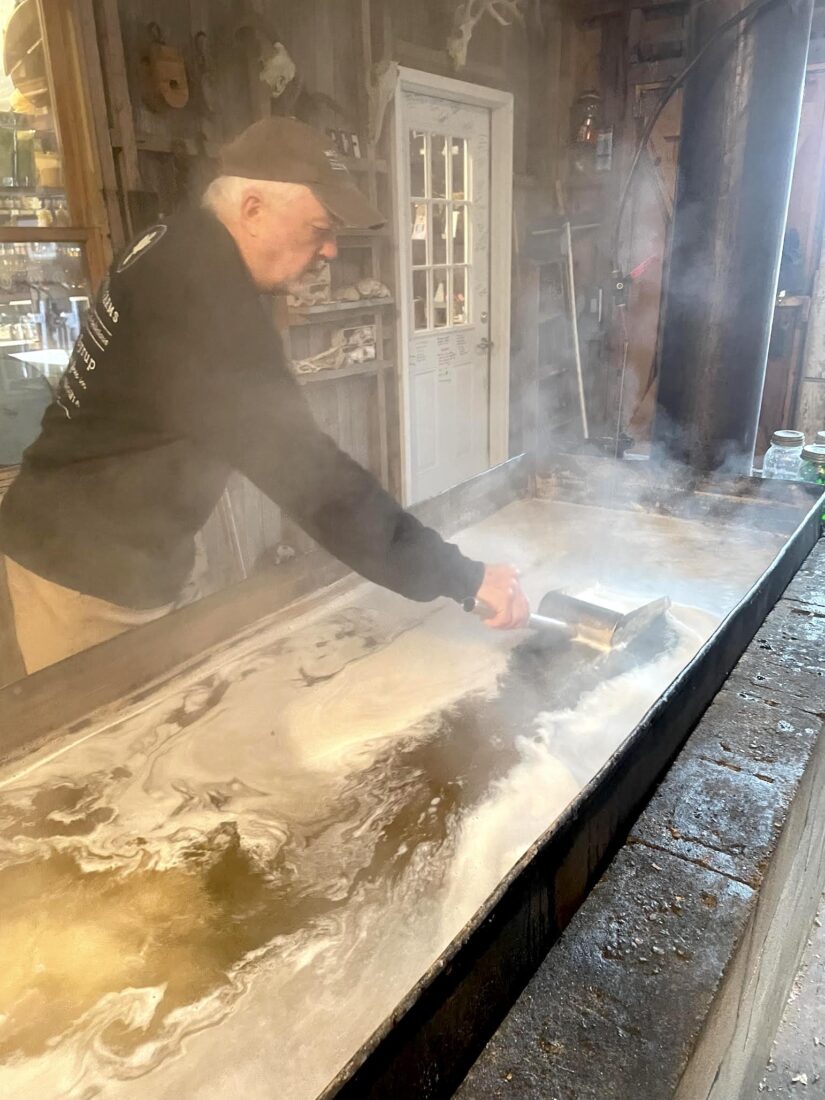
Virginia’s sweetest season begins in late January or early February, when farmers tap maple trees and the race begins to turn sugar water into liquid gold. “The sooner you process it, the better flavor you get,” Valerie says. Back Creek Farm produces traditional maple syrup as well as infused varieties like spiced elderberry and cardamom, along with barrel-aged bottles including bourbon and rum syrups. “I don’t drink,” Valerie says, “but that bourbon maple syrup, that’s amazing.”
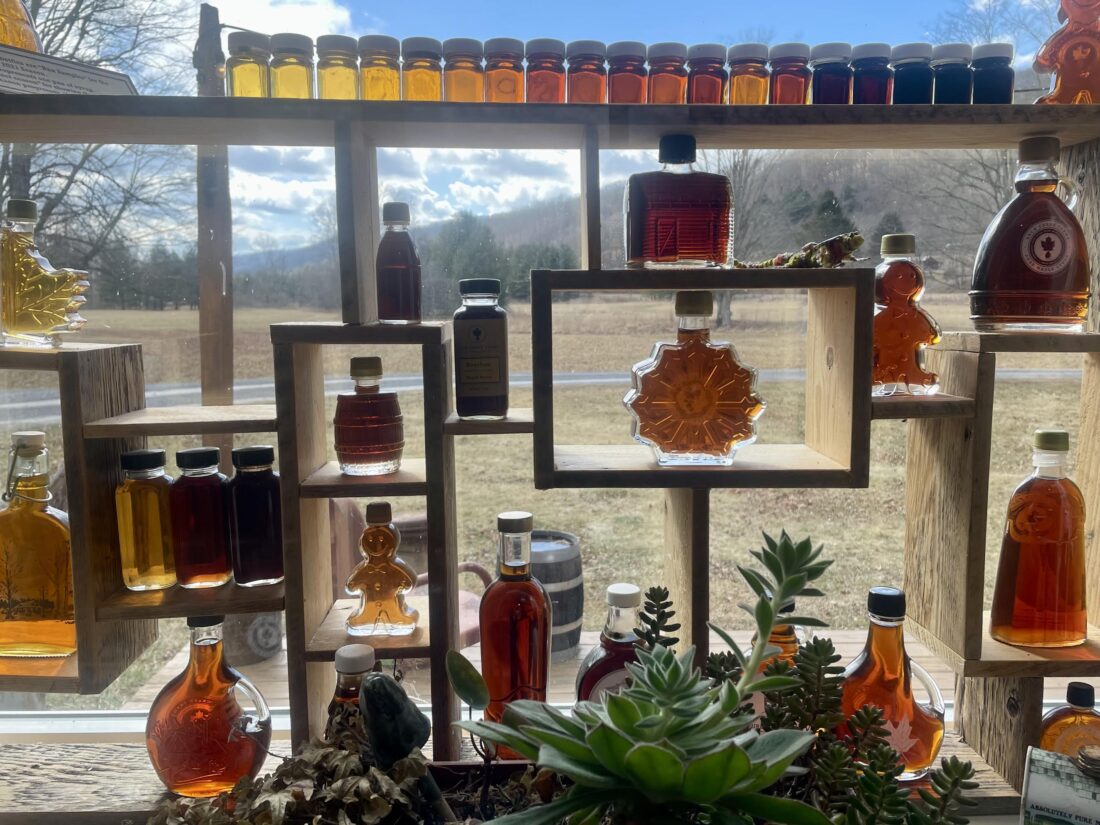
Throughout all of March, their sugar house is a buzzing factory of bubbling sucrose. “It just smells so amazing when it’s boiling. It’s kind of addictive,” Valerie says. But as delicious as the fragrance is, she adds that much of the work is done by sound. “The syrup makes a different sound when it’s boiling, like when it’s ready to come off versus when you start a new pan and it’s got fresh sugar water in it,” she says. Highland County syrup pros are tuned into these special sound frequencies, and that’s why the spring peepers are so important.

“Toward the end of the season, when the days actually do get warmer, in the evening, you’ll hear these peepers and they just, you know, peep,” Valerie says. The chorus is her and Pat’s cue to pull the taps. “At that point we know it’s too warm and it’s time for the trees to bud out.”
But while she’s spotted one peeper already this spring, she hasn’t heard any, er, peepage yet. Which means that at the upcoming Highland County Maple Festival over the weekends of March 9 and 10 and 16 and 17, there’s still plenty of syrup to slurp.

